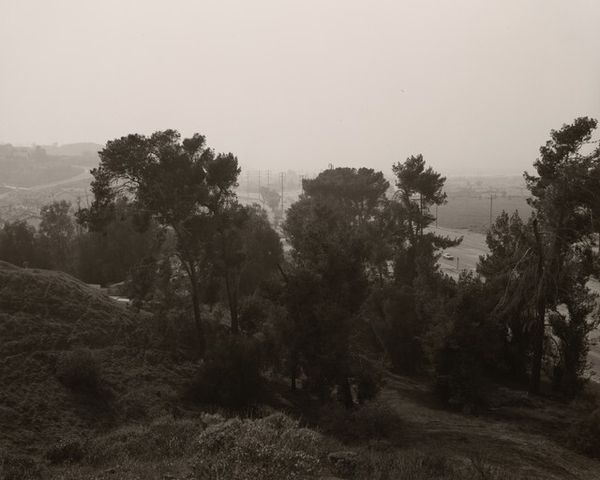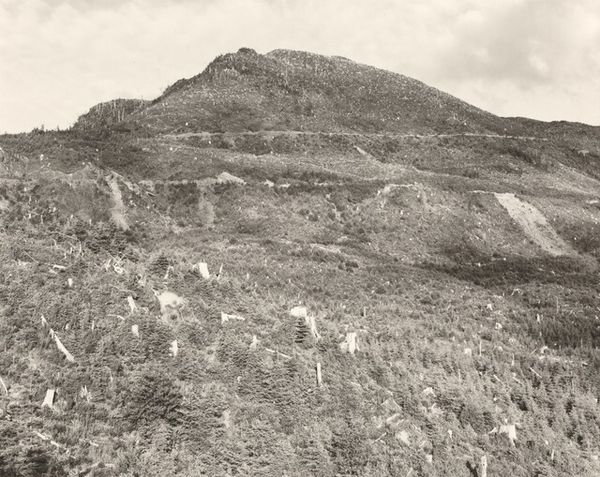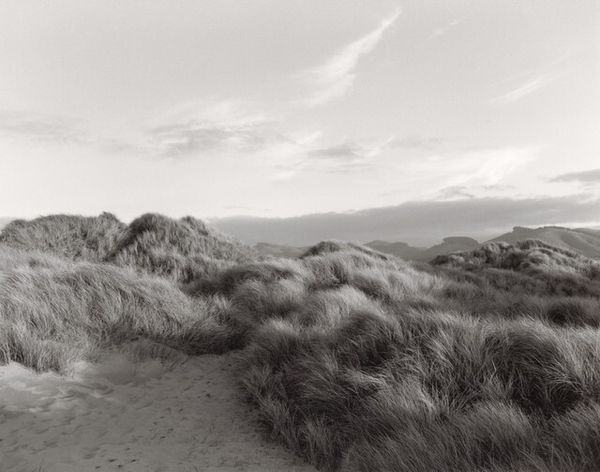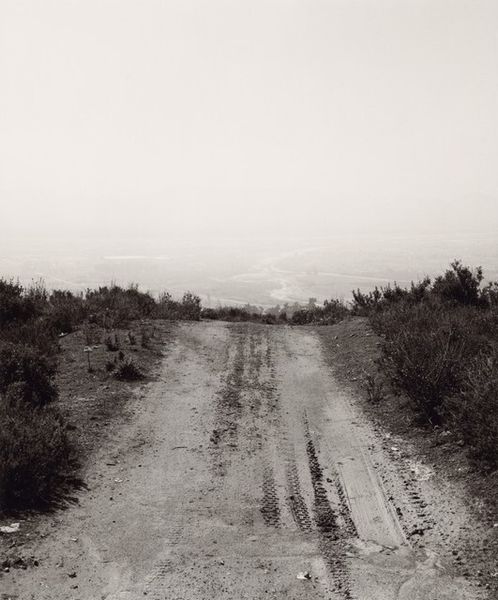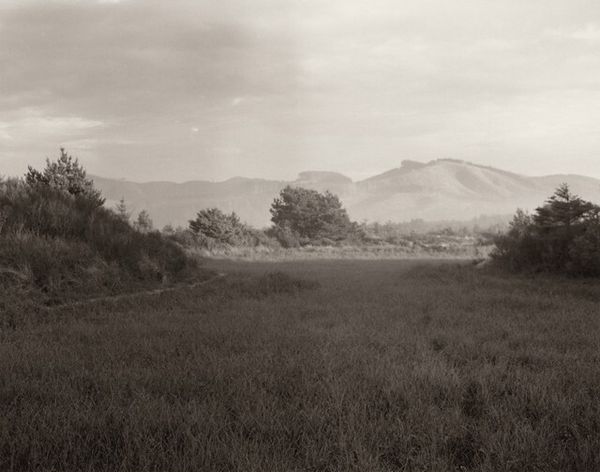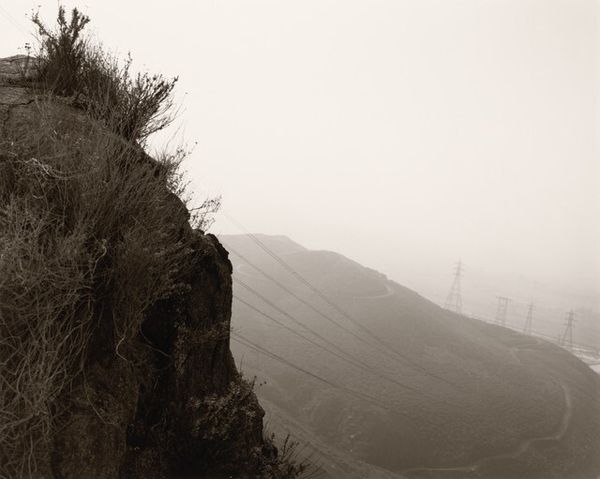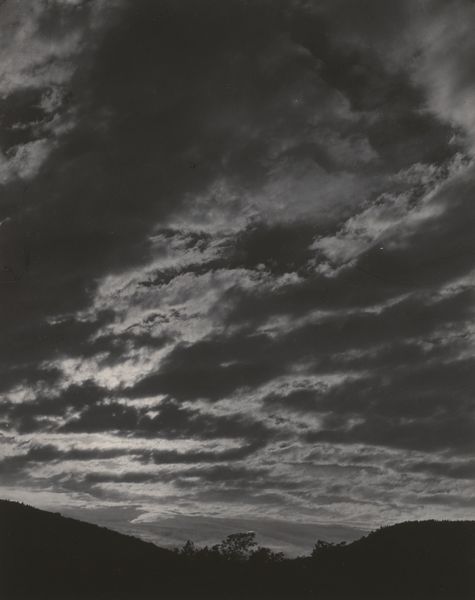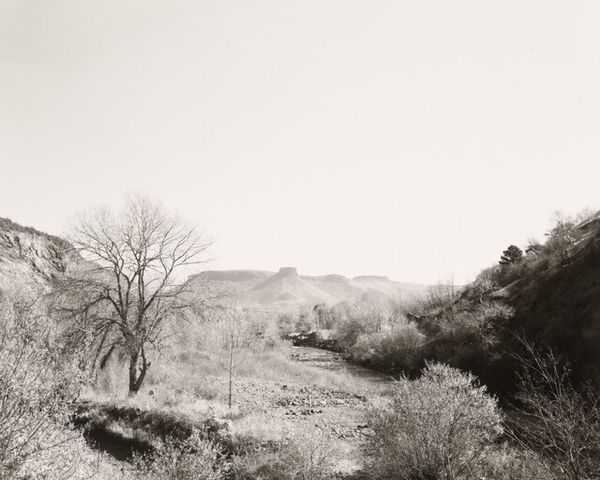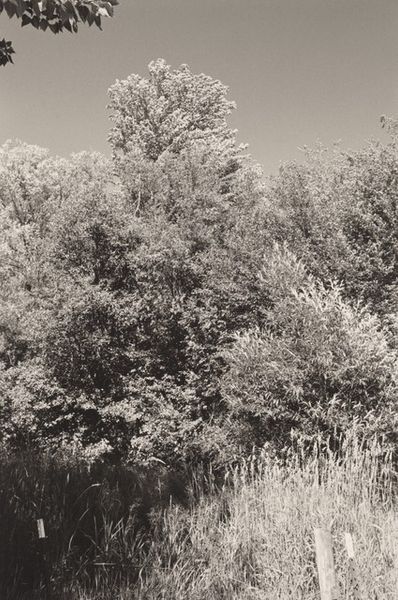
photography, gelatin-silver-print
#
photorealism
#
conceptual-art
#
black and white photography
#
landscape
#
photography
#
sky photography
#
gelatin-silver-print
#
monochrome photography
#
realism
#
monochrome
Dimensions: image: 38.1 × 48.1 cm (15 × 18 15/16 in.) sheet: 40.64 × 50.8 cm (16 × 20 in.)
Copyright: National Gallery of Art: CC0 1.0
Curator: Robert Adams' "Interstate 10, east edge of Redlands, California," a gelatin silver print from 1978. I see a pale sky, a hillside scarred with faint lines, and the suggestion of a highway ribboning along its base. What catches your eye first? Editor: The quietness. Despite knowing that an interstate and likely a city are nearby, there’s a stillness, an almost melancholic quality to the light and the somber palette. The scarred hill makes me think of wounded landscapes. Curator: Precisely! Adams photographed throughout the American West, particularly suburban Denver and Southern California, often capturing the tension between the built environment and the natural one. Editor: It's more than tension, though. Look at the placement of the highway; it's an imposition on the landscape, literally cutting across it. Adams implicates consumer culture’s environmental degradation, doesn't he? I wonder about issues of environmental racism when highways cleave through communities. Curator: It's interesting you bring up race. Adams’ work can also be seen as engaging with the legacy of landscape photography traditions in America, critiquing its mythologizing tendencies to make way for questions concerning our social and ecological ethics. It is a far cry from the optimism that propelled those 19th-century landscape photographers! Editor: Absolutely. Those sweeping vistas served the expansionist dreams of the time, obscuring its violence. Adams strips away the grandeur to confront the ordinary, everyday impact of progress, so-called. The monochrome further accentuates the somber mood, underscoring loss. Curator: You can almost smell the dryness of the vegetation and the exhaust fumes competing with it. His unflinching vision of the un-picturesque possesses a stark beauty, inviting introspection and questioning of our relationship with the world around us. Editor: Adams isn't merely documenting the effects; he’s asking us to consider our complicity. Whose lives and land are deemed expendable for progress, for connectivity? Curator: These quiet photographs shout the loudest. He asks us: is this really progress if we continue to extract at this rate? I come away contemplative, as usual. Editor: As do I. Adams gives us a scene, a reality, not an answer, making his photograph an enduring prompt to be better stewards.
Comments
No comments
Be the first to comment and join the conversation on the ultimate creative platform.
